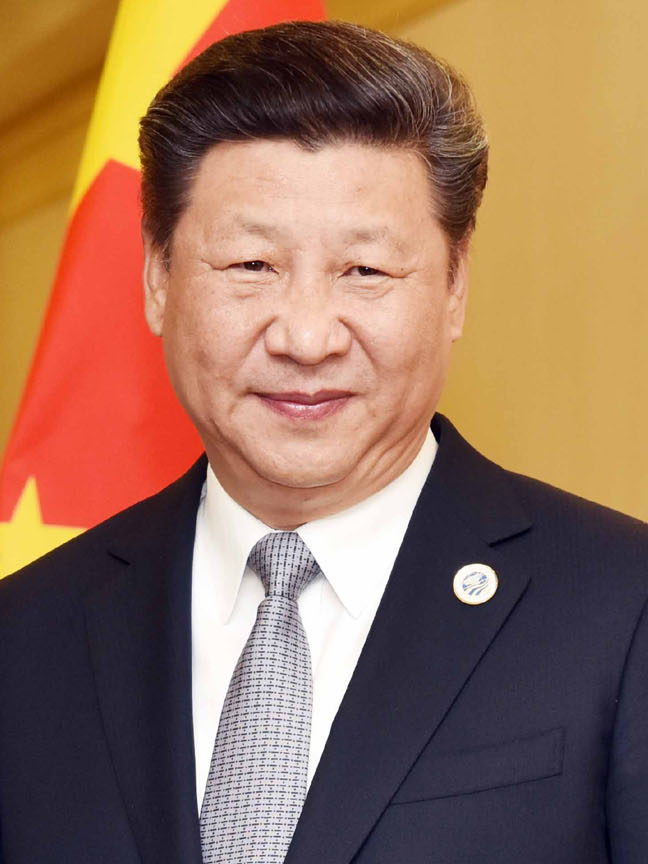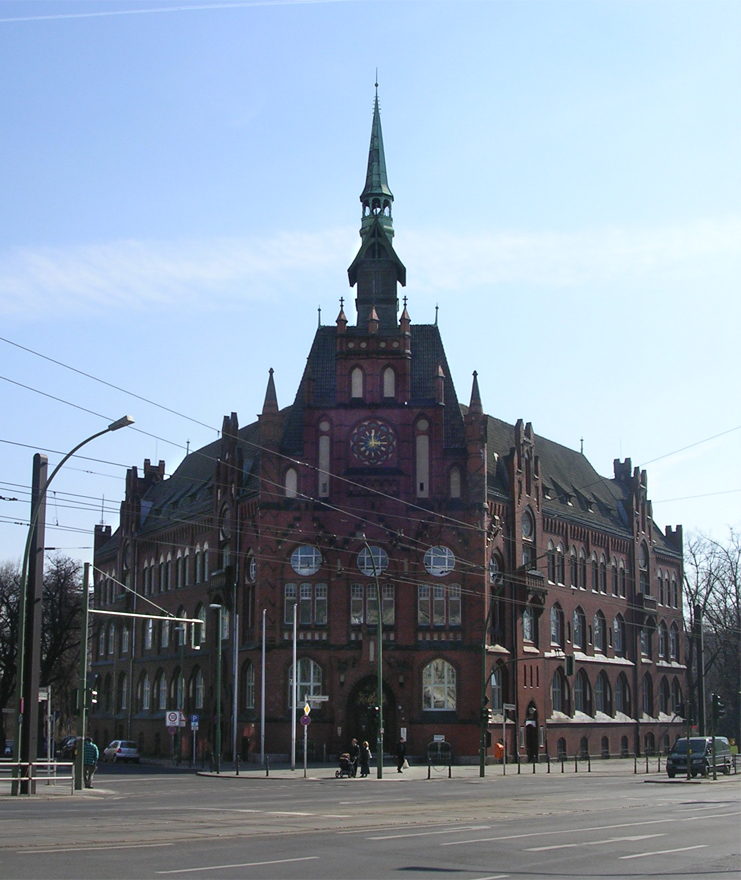|
Heinz Graffunder
Heinz Graffunder (23 December 1926 – 9 December 1994) was a German architect. Life Early years Heinz Graffunder as born into a working-class family in Berlin. His father worked as a pipefitter. Like others of his generation, the final part of his schooling was accelerated due to the pressures of World War II. He was then conscripted into the German army, which led to a period as a prisoner of war. The war itself ended approximately five months after his eighteenth birthday with Berlin occupied by Soviet troops. They would remain in the eastern part of what remained of Germany for nearly five decades. On his release Graffunder undertook an apprenticeship in the building trade. Architecture In October 1949 the German Democratic Republic was formally launched out of what had previously been better known as the Soviet occupation zone, although the basis for a return to one- party government had already been set in place with the creation of a ruling party back ... [...More Info...] [...Related Items...] OR: [Wikipedia] [Google] [Baidu] |
Berlin
Berlin ( , ) is the capital and largest city of Germany by both area and population. Its 3.7 million inhabitants make it the European Union's most populous city, according to population within city limits. One of Germany's sixteen constituent states, Berlin is surrounded by the State of Brandenburg and contiguous with Potsdam, Brandenburg's capital. Berlin's urban area, which has a population of around 4.5 million, is the second most populous urban area in Germany after the Ruhr. The Berlin-Brandenburg capital region has around 6.2 million inhabitants and is Germany's third-largest metropolitan region after the Rhine-Ruhr and Rhine-Main regions. Berlin straddles the banks of the Spree, which flows into the Havel (a tributary of the Elbe) in the western borough of Spandau. Among the city's main topographical features are the many lakes in the western and southeastern boroughs formed by the Spree, Havel and Dahme, the largest of which is Lake Müggelsee. Due to its l ... [...More Info...] [...Related Items...] OR: [Wikipedia] [Google] [Baidu] |
One-party State
A one-party state, single-party state, one-party system, or single-party system is a type of sovereign state in which only one political party has the right to form the government, usually based on the existing constitution. All other parties are either outlawed or allowed to take only a limited and controlled participation in elections. Sometimes the term "''de facto'' one-party state" is used to describe a dominant-party system that, unlike the one-party state, allows (at least nominally) democratic multiparty elections, but the existing practices or balance of political power effectively prevent the opposition from winning power. Although it is predated by the 1714 to 1783 "age of the Whig oligarchy" in Great Britain, the rule of the Committee of Union and Progress (CUP) over the Ottoman Empire following the 1913 coup d'etat is often considered the first one-party state. Concept One-party states justify themselves through various methods. Most often, proponents of a one- ... [...More Info...] [...Related Items...] OR: [Wikipedia] [Google] [Baidu] |
Berlin-Pankow
Pankow () is a locality (''Ortsteil'') of Berlin in the district (''Bezirk'') of Pankow. Until 2001 it was an autonomous district with the localities of Karow, Niederschönhausen, Wilhelmsruh, Rosenthal, Blankenfelde, Buch and Französisch Buchholz. History The village of Pankow is named after the small Panke river, a tributary of the Spree. The settlement was first mentioned in a 1311 deed by the Margraves of Brandenburg, though the " Four Evangelists" fieldstone church had already been erected about 1230. In 1691 Elector Frederick III acquired Schönhausen Palace, in neighboring Niederschönhausen, from the heirs of General Joachim Ernst von Grumbkow, which promoted the development of the Pankow village. As Pankow grew, due to industrialization, in the 19th century, it became a suburb – and popular day-trip destination – of Berlin. It was finally incorporated into the city by the Greater Berlin Act of 1920. In the East German period, from 1949 to 1990, ... [...More Info...] [...Related Items...] OR: [Wikipedia] [Google] [Baidu] |
Friedrichsfelde
Friedrichsfelde () is a German locality (''Ortsteil'') within the borough (''Bezirk'') of Lichtenberg, Berlin. History The locality was first mentioned in a document of 1265 with the name of ''Rosenfelde''. In 1699 it was renamed Friedrichsfelde after the Prince-Elector Frederick III of Brandenburg. It was an autonomous municipality of the former Niederbarnim district until 1920, when it merged into Berlin under the "Greater Berlin Act". Geography Located in eastern suburb of Berlin, Friedrichsfelde borders with the localities of Lichtenberg, Rummelsburg, Karlshorst, Marzahn and Biesdorf (both in Marzahn-Hellersdorf district). In its south-eastern corner is situated the "Tierpark Berlin", the second zoo of the city. Transport As urban rail, Friedrichsfelde is crossed both by ''S-Bahn'' and ''U-Bahn''. The stations serving the locality are Friedrichsfelde Ost (lines S5, S7, S75), Friedrichsfelde ( U5), Tierpark (U5) and partly Rummelsburg Rummelsburg () is a subdivision or ... [...More Info...] [...Related Items...] OR: [Wikipedia] [Google] [Baidu] |
Tierpark Berlin
The Tierpark Berlin is one of two zoos located in Berlin, Germany. It was founded in 1955 and is located in Friedrichsfelde on the former grounds of Friedrichsfelde Palace, which is situated within the zoo. , the zoo houses 7,250 animals from 846 species,Tierpark BerlinTierstatistik 2013 Retrieved 18 January 2014. in an area of . Tierpark Berlin also features two public exhibits free of charge, one being the Bärenschaufenster (Bear Show Window) for American black bears. The park is also home to the Von Treskow (noble family), Treskow family's historic Treskow family burial ground (Berlin), family burial ground. Tierpark Berlin is a member of the European Association of Zoos and Aquaria (EAZA) and participates in about 120 breeding programmes (European Endangered Species Programme, EEP). It maintains the international studbooks for endangered species of deer and wild asses of Asia and Africa as well as the European studbook for little pied cormorants. The zoo further participate ... [...More Info...] [...Related Items...] OR: [Wikipedia] [Google] [Baidu] |
Lichtenberg (locality)
Lichtenberg () is a quarter (''Ortsteil'') of Berlin in the homonymous borough (''Bezirk'') of Lichtenberg. Until 2001 it was an autonomous district with the localities of Fennpfuhl, Rummelsburg, Friedrichsfelde and Karlshorst. History The historic village of Lichtenberg, today also called ''Alt-Lichtenberg'', was founded about 1230, due to the German colonization of the territory of Barnim. The settlement around the fieldstone church was first mentioned in a 1288 deed, its estates were acquired by the neighbouring City of Berlin in 1391. ''Alt-Lichtenberg'' suffered severely during the Thirty Years' War and remained a small village at the Berlin gates until in the late 18th century Prussian noblemen like general Wichard Joachim Heinrich von Möllendorf built their residences here. In 1815 the Lichtenberg estate became a property of the Prussian chancellor Karl August von Hardenberg. The village came to be a residential area and a suburb of Berlin from the mid 19th century on ... [...More Info...] [...Related Items...] OR: [Wikipedia] [Google] [Baidu] |
Friedrichshain
Friedrichshain () is a quarter (''Ortsteil'') of the borough of Friedrichshain-Kreuzberg in Berlin, Germany. From its creation in 1920 until 2001, it was a freestanding city borough. Formerly part of East Berlin, it is adjacent to Mitte, Prenzlauer Berg, Kreuzberg and Lichtenberg. Friedrichshain is named after the ''Volkspark Friedrichshain'', a vast green park at the northern border with Prenzlauer Berg. In the Nazi era, the borough was called '' Horst-Wessel-Stadt''. Friedrichshain is one of the trendy districts of Berlin and has experienced gentrification. Geography Friedrichshain is defined by the following roads and places, starting clock-wise in the west: Lichtenberger Straße, Mollstraße, Otto-Braun-Straße, Am Friedrichshain, Virchowstraße, Margarete-Sommer-Straße, Danziger Straße, Landsberger Allee, Hausburgstraße, Thaerstraße, Eldenaer Straße, S-Bahn-Trasse, Kynaststraße, Stralauer Halbinsel, Spree. History The largely working-class district was created in ... [...More Info...] [...Related Items...] OR: [Wikipedia] [Google] [Baidu] |
Palast Der Republik DDR 1977
Palast means ''palace'' in German and may refer to * Palast (surname) * Palast Orchester, a German orchestra based in Berlin * König Palast (Kings Palace), an arena in Krefeld, Germany * Friedrichstadt-Palast, a revue in the Berlin district, Germany * Ufa-Palast am Zoo, a former major cinema in Berlin {{disambiguation, geo ... [...More Info...] [...Related Items...] OR: [Wikipedia] [Google] [Baidu] |





